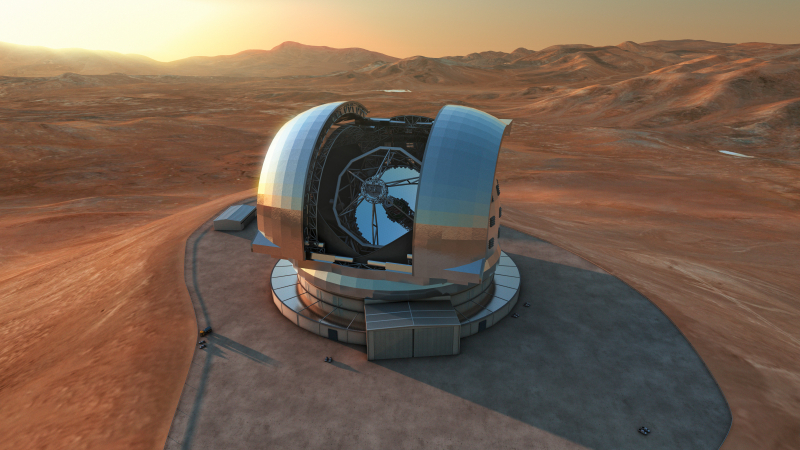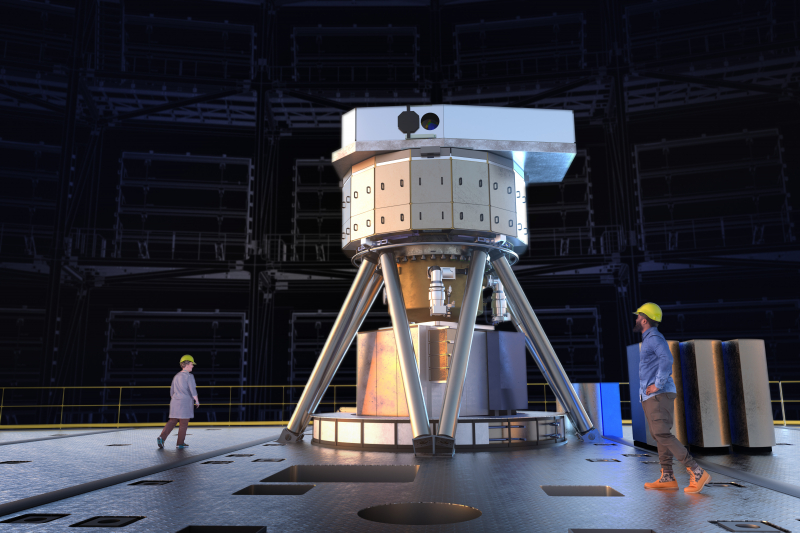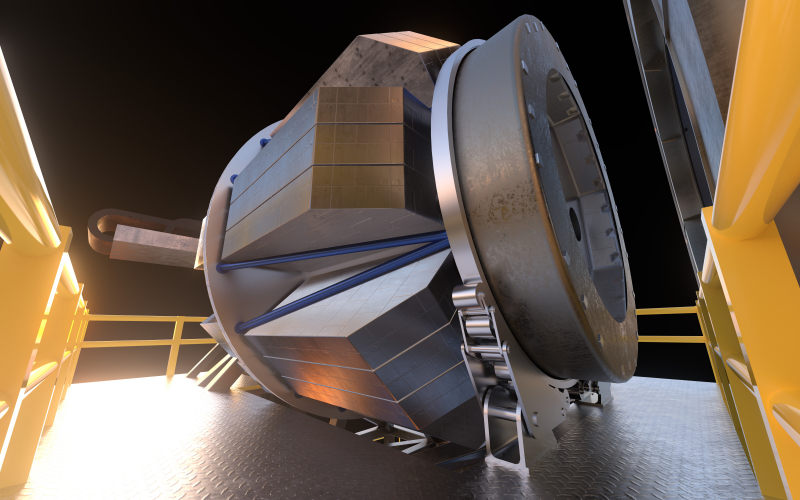F-CELT: an EquipEx+ for the French contribution to the Extremely Large Telescope instruments
In 2027, the largest optical telescope ever built will see its first light at the European Southern Observatory (ESO) in the Atacama Desert in Chile. Named ELT, for Extremely Large Telescope, it will allow advances on major astronomical questions. France is a major contributor to its construction. Thanks to the status of “Structuring equipment for research/EquipEx+” of the F-CELT project, the French contribution to the instrumentation of the ELT has received an additional funding of almost 8 million euros.
The ELT: the largest telescope in the world
Over the past 50 years, astronomy has undergone several revolutions that have brought their share of exciting new questions. How has the Universe been built and how has it evolved since the Big Bang? Could dark energy and matter be explained by large-scale properties of gravitation? Is general relativity still valid in the vicinity of black holes? What was the nature of the first stars? And many others.
An extremely sensitive telescope with a very high angular resolution is needed to make decisive advances on these questions. This is why the European Southern Observatory (ESO) is building the largest telescope ever conceived for optical and infrared astronomical observation: the Extremely Large Telescope (ELT). With a diameter of 39 meters, its collecting surface will be the largest in the world, ahead of the Thirty Meter Telescope (30 m) and the Giant Magellan Telescope (24.5 m). The ELT, whose construction will be completed in 2027, will reinforce the European leadership in optical astronomy.

The instruments of the ELT
The ELT instruments are being built by instrumental consortia involving several ESO member states. They are :
- MICADO, a near-infrared camera with spectroscopic capability (it receives light from an object and breaks it down to see all of its wavelengths)
- MAORY, an adaptive optics module to which MICADO will be coupled (and potentially future visiting instruments) to compensate for the distortion of light caused by the turbulence of the Earth’s atmosphere and to make the images sharper
- HARMONI, an integral near-infrared spectrograph
- METIS, a mid-infrared imaging spectrograph
- MOSAIC, a multi-object spectrograph to observe simultaneously a large number of objects or several parts of the same object
- ANDES (ex-HIRES), a spectrometer with very high spectral resolution

The scientific exploitation of the ELT instruments will allow the study of stars in nearby galaxies and the detection, imaging and direct characterization of a large number of exoplanets. Astronomers will also be able to trace the birth of planetary systems by simultaneously imaging the disks around young stars with unprecedented angular resolution, and young hot planetary objects, potentially still accreting material from the disk. The ELT will change our vision of the physical, chemical and dynamical processes that shape the evolution of the Solar System by making possible the study of small bodies (asteroids, comets etc.) which are the most primitive constituents of the Solar System. Major progress is also expected in the study of the physics and chemistry of the interstellar medium – the mixture of gas and dust that fills the space between the stars in a galaxy. Another major project for the ELT is to elucidate the nature of dark matter, a hypothetical material that is thought to make up 85 percent of the universe. The list goes on: the instruments will be able to detect and track the electro-magnetic counterparts of gravitational waves, advance our understanding of the formation and evolution of galaxies and the intergalactic medium through cosmic time, and shed light on the physical properties of the first generation of galaxies formed after the Big Bang through spectrocopic observations of thousands of galaxies. The ELT thus has the potential to have a considerable impact on our understanding of the cosmos and its fate.
An important French contribution
France is principal investigator (PI) of MOSAIC, deputy PI of HARMONI and co-investigator (Co-I) of the other instruments. French teams will provide major parts or are in charge of major work packages for all instruments. The contribution to ANDES is more limited but France is well involved in the preparation of the scientific exploitation. Participating in the construction of the instruments is essential to :
- maintain the excellence and the leadership of the know-how in optical instrumentation in France ;
- be among the first users of the ELT instruments;
- to benefit from guaranteed time and to train the French astronomical community in the use of the ELT instruments.

A national coordination was set up by CNRS-INSU in 2013 to define a clear roadmap, ensure national visibility in the ELT and optimize resources. In 2021, the F-CELT project, which gathers most of the French contributions to the ELT instrumentation, was one of the 50 winners of the call for expressions of interest “Structuring equipment for research/EquipEx+”, thus ensuring additional funding of almost 8 million euros to carry out all its missions.
French research actors
The laboratories involved :
- Laboratoire « astrophysique, interprétation, modélisation » (AIM)
- Centre de recherche astrophysique de Lyon (CRAL)
- Laboratoire « galaxies, étoiles, physique, instrumentation » (GEPI)
- Institut de planétologie et d’astrophysique de Grenoble (IPAG)
- Institut de recherche en astrophysique et planétologie (IRAP)
- Laboratoire Lagrange
- Laboratoire d’astrophysique de Marseille (LAM)
- Laboratoire d’études spatiales et d’instrumentation en astrophysique (LESIA)
- Laboratoire « Univers, temps-fréquence, interfaces, nanostructures, atmosphère et environnement, molécules » (UTINAM)
IRAP Contacts
- Thierry Contini, thierry.contini@irap.omp.eu
- Marie Larrieu, marie.larrieu@irap.omp.eu






